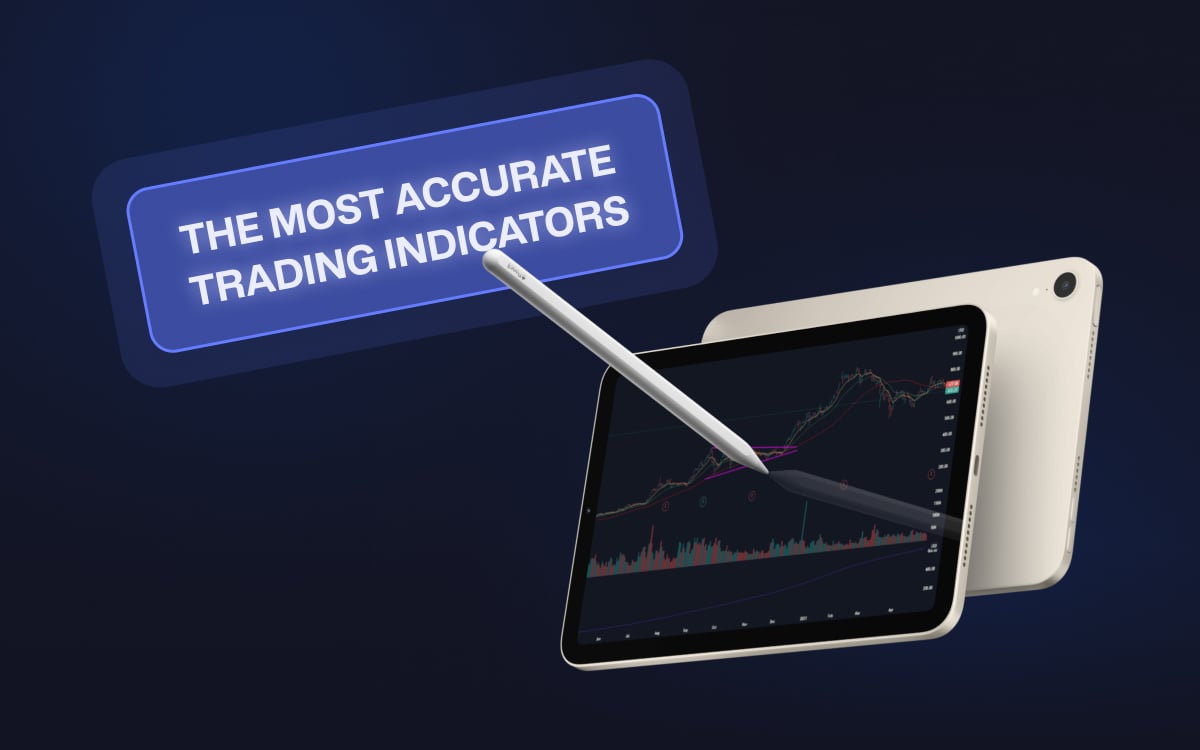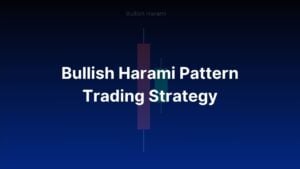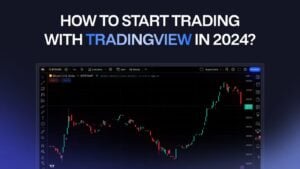In this rapidly evolving world of investing and stock trading, selecting the right tools to assist you in dissecting market trends and making informed decisions is pivotal.
This brings us to the quintessential question: What are the most accurate trading indicators, and how can they be leveraged to maximize profits while minimizing risks?
Each indicator brings a unique perspective from the classic Moving Averages (MA), which smooths out market noise to reveal underlying trends, to the more intricate Bollinger Bands that gauge market volatility.
The Relative Strength Index (RSI) serves as a market pulse checker, while the Stochastic Oscillator acts as a momentum decider, and the list goes on.
But here’s the twist – while these tools offer a wealth of insights, using them effectively is an art. The key is to use a few in conjunction to achieve more accurate results.
Let’s begin with how I cherrypicked my list of the best technical trading indicators in 2024.
Criteria for Judging
1. Profitability
First, we’re looking at profitability – basically, we want to see if the indicator can pull in consistent profits based on its track record.
2. Accuracy
Accuracy is a big deal, too. We want our indicator to line up well with what’s happening in the market. The more precise, the better because that helps traders make smart decisions.
3. Drawdown
Then there are drawdowns– trading isn’t just about wins; it’s also about minimizing losses. So, we’re checking how well the indicator holds up during market downturns.
4. Versatility
Different market conditions demand different strategies. We want an indicator that can roll with the punches and work well in various scenarios.
5. Ease of Interpretation
Last but not least, we’re looking for simplicity. Traders like indicators that are easy to read, understand, and incorporate in their decisions. It’s a win in our book if it’s clear and straightforward.
Top 10 Most Profitable Trading Indicators
| Indicator | Purpose | Calculation Formula | Threshold Levels | Strengths | Profitability | Accuracy | Drawdown |
|---|---|---|---|---|---|---|---|
| Moving Average (MA) | Trend identification | MA = Sum of Prices/Number of Periods | Crossovers with price, support/resistance | Simplicity, adaptability to various timeframes | High | Moderate | Low |
| Relative Strength Index (RSI) | Overbought/oversold conditions | RSI = 100 – (100/1 + RS) | >70 (overbought), <30 (oversold) | Identifying potential reversal points | Moderate | High | Low |
| Bollinger Bands | Volatility and trend analysis | Upper Band = MA + (2 * Standard Deviation) | Price at/above upper band (overbought), price at/below lower band (oversold) | Captures volatility, potential reversal signals | Moderate | Moderate | Moderate |
| Stochastic Oscillator | Momentum and trend reversals | %K = ((Current Close – Lowest Low) / (Highest High – Lowest Low)) × 100 | >80 (overbought), <20 (oversold) | Detecting potential trend reversals | Moderate | Moderate | Moderate |
| MACD (Moving Average Convergence Divergence) | Trend strength and reversals | MACD Line = 12-day EMA – 26-day EMA | Crossovers of MACD Line and Signal Line | Captures multiple aspects of trend dynamics | Moderate | High | Low |
| Average True Range (ATR) | Volatility measurement | ATR = (Sum of True Ranges over 14 periods) / 14 | A high ATR indicates high volatility | Setting stop-loss levels, position sizing | Low | Moderate | Moderate |
| Fibonacci Retracement | Support and resistance levels | Retracement Level = Previous Low + (Retracement Percentage * Previous Range) | 23.6%, 38.2%, 50%, 61.8%, 78.6% | Identifying potential reversal levels | Low | Moderate | Moderate |
| Ichimoku Cloud | Trend direction and support/resistance | Conversion Line, Base Line, Cloud, Leading Span A/B | Price above cloud (bullish), below cloud (bearish) | Holistic view of trend and momentum | Moderate | High | Moderate |
| Average Directional Index (ADX) | Strength of a trend | ADX = (Smoothed Average of +DI – -DI/Smoothed Average of +DI + -DI)*100 | +DI – -DI | Assessing the strength of a prevailing trend | Moderate | High | Low |
| Parabolic SAR | Trend reversal identification | SAR_t = SAR_(t-1)+AF×(EP_( t-1)−SAR_(t-1) ) | Dots below price (bullish), above price (bearish) | Dynamic adaptation to changing market conditions | Low | Moderate | Moderate |
1. Moving Averages (MA)

The Moving Average (MA) is a key player in technical analysis and the most profitable trading indicator. It helps smooth out price data and bring attention to underlying trends. And if you want to take it one notch further, we have a free indicator that you could try – our Machine Learning Moving Average on TradingView.
MA does this by averaging prices over a specific time and effectively filtering out those short-term ups and downs, giving us a clearer view of the overall trend.
Here’s the math:
Add the closing prices over the chosen time frame, then divide that sum by the number of periods. For instance, a 50-day Moving Average looks at the closing prices of the past 50 days, giving us an average that reflects the trend over that time.
Traders often mix it up using MAs with different time frames to catch short-term and long-term trends.
2. RSI

The Relative Strength Index (RSI) is the most accurate trading indicator. It is like a speedometer for price movements, measuring how fast and big things change.
Traders love using the RSI to spot when a market might be getting too hot (overbought) or too cold (oversold) to give them a heads-up on possible trend reversals.
The RSI is calculated using the following formula:
RSI = 100 – (100/1 + RS)
,where RS (Relative Strength) is the average of ‘x’ days’ up closes divided by the average of ‘x’ days’ down closes. Typically, ‘x’ is set to 14 days.
The RSI gives out values from 0 to 100. A value above 70 indicates it might be overbought, and below 30, it could be oversold.
One great thing about RSI is how it confirms trend strength. During a strong uptrend, the RSI tends to stay in the overbought zone, while in a downtrend, it lingers in the oversold region. This makes RSI a handy tool for confirming trend strength and spotting possible changes.
One small thing about the standard RSI indicator is that it shows up below. Sow created our own RSI indicator that can be applied directly on the chart (its a free indicator).
3. Bollinger Bands

Bollinger Bands, a volatility indicator, combine three bands – an upper band, a middle band (20-day simple moving average), and a lower band. These bands aren’t static; they adjust as prices move, expanding in lively markets and squeezing in calmer times.
Here’s the formula for it:
Upper Band = MA + (2 × Standard Deviation)
Lower Band = MA – (2 × Standard Deviation)
, where MA is the moving average.
Why do traders love them?
Bollinger Bands help spot possible overbought or oversold situations. If prices touch the upper band, it might mean things are overheated, signaling a potential turnaround. Conversely, hitting the lower band could suggest oversold conditions and a chance of bouncing back.
And, of course, the bandwidth isn’t just for show. It indicates volatility– wider bands mean things are jumping, while narrower ones hint at a quieter market.
Pro Tip: Keep an eye on the squeeze – low volatility followed by a possible breakout is a sign of a potentially significant price move.
Just like moving averages, we have a premium Bollinger Bands indicator if you want to take your analysis up a notch.
4. Stochastic Oscillator

The Stochastic Oscillator, a momentum indicator, helps determine if an asset is ready to change or stick to its current trend. It compares the closing price to the price range over a set time.
The formula for the Stochastic Oscillator involves calculating two lines – %K and %D:
%K = ((Current Close – Lowest Low) / (Highest High – Lowest Low)) × 100
%D is a 3-day moving average of %K.
%K shows the current closing price in the high-low range over the selected period, and %D smoothens things with a 3-day average.
Values from the Stochastic Oscillator fall between 0 and 100. If it’s above 80, things might be overbought; below 20, it could be oversold. Traders check for differences between price moves and the Stochastic Oscillator, as they could signal a potential change in trend.
This indicator shines at spotting market turning points and giving traders a heads-up on possible buying or selling opportunities based on the current momentum.
I know your hands are itching to try this out. Here’s our free Stochastic Oscillator on TradingView.
5. MACD

The Moving Average Convergence Divergence (MACD) sheds light on a trend’s strength, direction, momentum, and duration changes. It breaks down into three parts – the MACD line, the signal line, and the histogram.
Here’s how they’re calculated:
MACD Line = 12-day Exponential Moving Average (EMA) – 26-day EMA
Signal Line = 9-day EMA of the MACD Line
, and the Histogram is the difference between the MACD and Signal Line.
Traders love the MACD’s versatility – it helps spot trend reversals, confirms trends, and flags potential buy or sell signals. A bullish trend might be on the horizon if the MACD line crosses above the signal line, while a cross below could signal a potential bearish trend.
6. ATR

The Average True Range (ATR) is a volatility indicator to gauge market activity and help traders determine appropriate stop-loss levels and position sizes. Developed by J. Welles Wilder, ATR goes beyond simple price ranges to offer a more precise take on volatility.
It’s the average of true ranges over a set period. The true range is the biggest of three values:
- Current High – Current Low,
- Absolute value of Current High – Previous Close,
- Absolute value of Current Low – Previous Close.
For instance, a 14-day ATR calculates the average true range over the last 14 days: ATR = (Sum of True Ranges over 14 periods) / 14.
The ATR value gives us the average distance between high and low prices over the specified period– higher ATR means more volatility, while lower values point towards a quieter market.
By popular demand, we created an advanced version of ATR for the Zeiierman community: ATR PSAR Trailing Stop.
7. Fibonacci Retracement

Fibonacci Retracement, a tool rooted in the Fibonacci sequence, is a go-to for pinpointing potential support and resistance levels in a market. It comes in handy for identifying possible reversal points after a significant price swing.
The magic numbers here are 23.6%, 38.2%, 50%, 61.8%, and 78.6% – representing the percentage retracement of a prior price move. So, a 38.2% retracement means the price has rolled back 38.2% of its previous journey.
The formula for Fibonacci retracement levels is:
Retracement Level = Previous Low + (Retracement Percentage × Previous Range)
Traders love it for its ability to spot potential entry or exit points in a trend. When the price hits one of these levels, it could signal a trend reversal or continuation. It’s a solid sidekick to other technical analysis methods to confirm potential support or resistance areas.
We have a free Auto Fib Retracement indicator on TradingView that’s quite popular among the traders.
8. Ichimoku Cloud

The Ichimoku Cloud, also known as Ichimoku Kinko Hyo, is a robust technical analysis tool designed by Goichi Hosoda. It goes beyond the basics, offering a holistic perspective on market dynamics, including support, resistance, trend direction, and momentum.
Here’s what’s under its key components:
- Conversion Line (Tenkan Sen): The average of the highest and lowest low over a specific period.
- Base Line (Kijun Sen): Similar to the Conversion Line but calculated over a longer stretch.
- Cloud (Kumo): The shaded zone between Leading Span A and Leading Span B indicates potential support and resistance.
- Leading Span A: The Conversion Line and Base Line average, projected 26 periods ahead.
- Leading Span B: The average of the highest and lowest low over a set period is also projected 26 periods ahead.
Traders use the Ichimoku Cloud to spot trends, key support and resistance levels, and potential reversals. If the price is above the cloud, it signals a bullish trend; below, it hints at a possible bearish trend. The Tenkan-Kijun crossover, where the Conversion Line and Base Line intersect, can also be a heads-up for potential changes in trend direction.
This is our enhanced version of Ichimoku Cloud that’s much easier to use.
9. ADX

The Average Directional Index (ADX), developed by J. Welles Wilder, is a technical indicator that gauges the strength of a trend, regardless of its direction. It is key in the Directional Movement Index (DMI) system.
The ADX is calculated by smoothing the difference average between the +DI (Positive Directional Index) and -DI (Negative Directional Index) over a specific period. The formula involves dividing the smoothed average of the absolute value of the difference by the smoothed average of the total of +DI and -DI.
ADX = (Smoothed Average of +DI – -DI/Smoothed Average of +DI + -DI)*100
ADX values range from 0 to 100. A higher ADX signals a robust trend, while a lower reading suggests a weaker trend or a sideways market.
Traders turn to ADX to evaluate the strength of an ongoing trend. A rising ADX points to a strengthening trend, while a falling ADX hints at a potential weakening or the emergence of a sideways market.
When paired with the +DI and -DI components, ADX provides traders with a complete picture of trend strength and directional movement. So, this indicator helps traders identify whether a market is on a strong trend, consolidating, or potentially reversing.
That said, the original ADX felt a bit outdated. So we at Zeiierman created our premium indicator that replace the old ADX.
10. Parabolic Sar

The Parabolic Stop and Reverse (SAR), another one developed by J. Welles Wilder, is a nifty trend-following indicator that spots possible reversal points in a market. It places dots above or below price candles and gives a heads-up on the potential trend direction.
SAR for the current period is calculated and updated based on the Acceleration Factor (AF), which starts at a certain value and increases each period. This lets the SAR speed up as the trend unfolds.
SAR_t =SAR_(t-1)+AF×(EP_( t-1)−SAR_(t-1) )
Here, SAR is the Stop and Reverse value for the current period, AF is the Acceleration Factor, and EP is the Extreme Point.
The SAR values sit above or below price candles, pointing to potential reversal spots. If the price is under the SAR, it hints at a bullish trend; above suggests a potential bearish trend. So traders often turn to Parabolic SAR for setting stop-loss orders or figuring out potential entry and exit points in trending markets.
Just like ADX, we created an enhanced version of PSAR for traders who wanted better results.
Considerations
These tools are gold mines of insights, but there’s an art to using them effectively and mindfully. First, market conditions don’t stand still; what works like a charm in a trending market might hit a snag in a sideways one. Being able to tweak indicators to fit different scenarios is a skill.
Plus, no single indicator can predict the market’s future – that’s why it’s smart to mix and match for a well-rounded view. Don’t sleep on risk management either; sizing up positions and setting up stop-loss levels should remain at the top of your mind.






